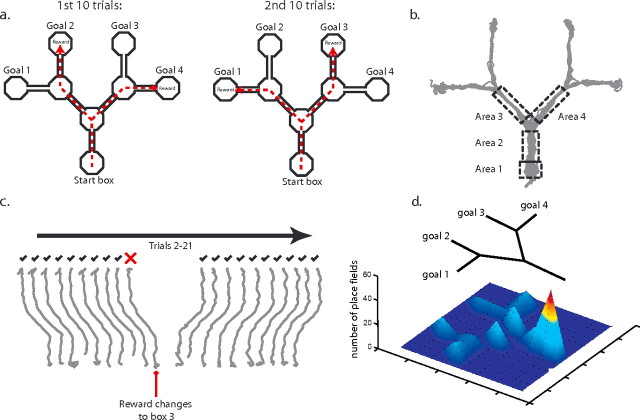Figure 1.
A, Schematic representation of the concatenated Y-maze. In pretraining, two of the four goal boxes contained reward in each block of 10 trials. In this example, boxes 2 and 4 are rewarded in the first 10 trials and boxes 1 and 3 in the second 10 trials. B, Representation of the binned areas used to examine the influence of goal destination on place cell firing. C, Example of the paths taken by a rat on 20 consecutive trials. The paths are ballistic and reflect little hesitation at choice points. The rat returns to the same goal on every trial until it is not rewarded and then immediately chooses another box. If that box is rewarded, it returns to this location in subsequent trials. This illustrates the ability of the rat to learn in one trial that the reward location has changed. D, Frequency distribution of place fields on the maze. Higher peaks and warmer colors indicate higher numbers of place fields.

